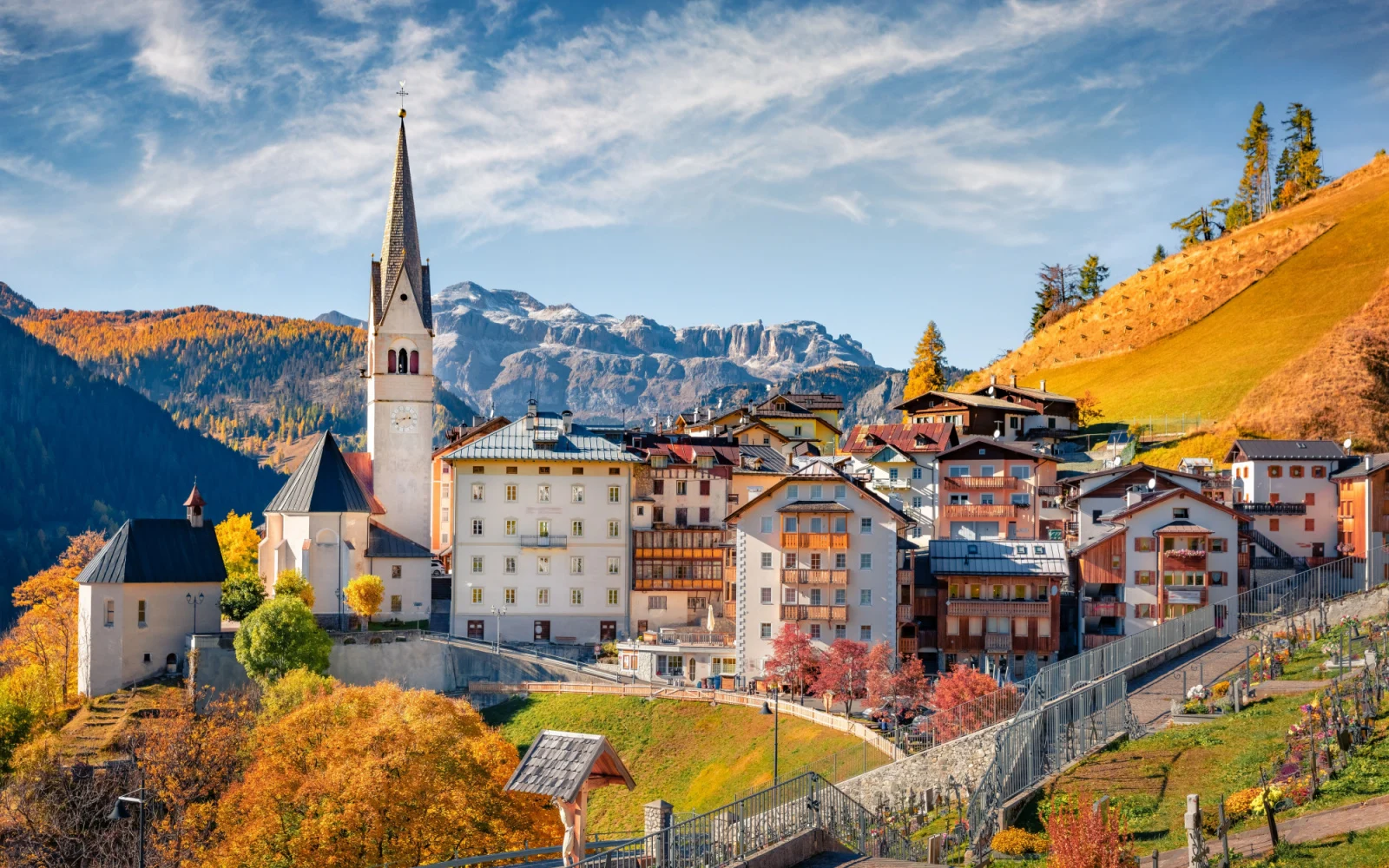How many countries are in Europe?
Europe consists of a varying number of countries depending on different definitions, ranging from 44 to 50. The exact number of countries in Europe remains debatable, with some regions like Turkey and Cyprus often included in the count, bringing the total to around 48 countries
Europe: a land of romance and antiquity, food, and seriously Instagram-worthy photo ops.
Anyone who has ever planned a trip to the Continent (as it has long been known by us Yanks) understands the allure of its cobblestone streets, cathedral spires, and bread. Yes, I said bread. Because bread.
It’s hard to choose where to go, though. With so many options, it can feel a little overwhelming to decide how to spend your limited time and budget.
If you’ve long wondered “How many countries even are there?” then you’re not alone. In today’s episode of Travel Deep Dives (a series title I just made up but am totally sticking with), we’ll take a look at how many nations make up this little continent.
Countries in Europe: The Total
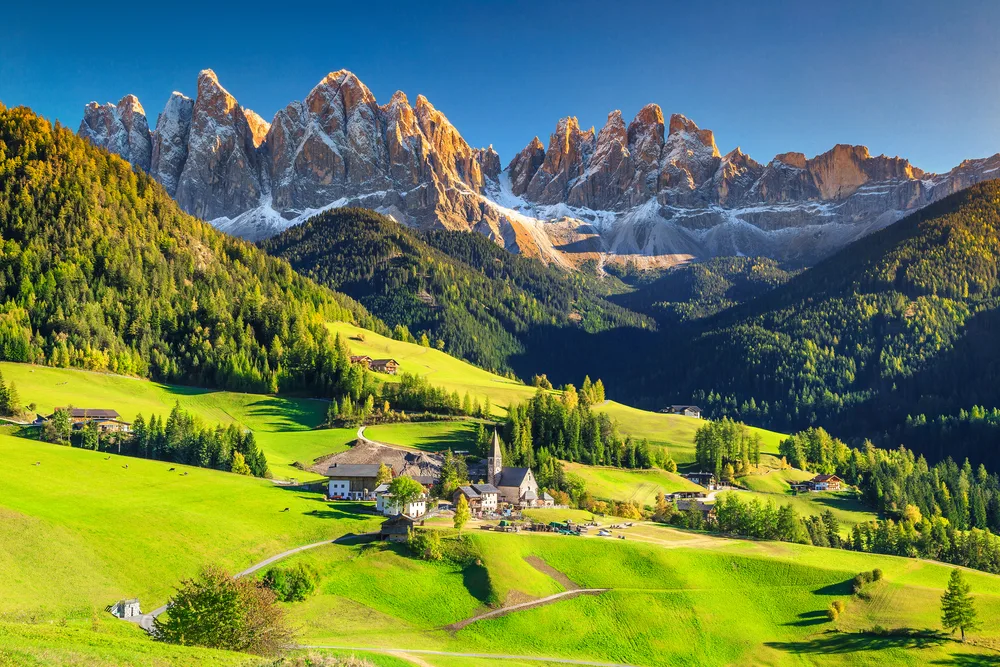
Gaspar Janos/Shutterstock
Right off the bat, we’re going to have to disappoint you: there is no real agreement on how many countries there are in Europe. Online numbers vary widely, depending on where you look, which link you click, whom you trust, and what year it is.
For instance, there are 45 countries in Europe, according to the Schengen Visa page, which offers guidelines on traveling between the 27 border-free nations of Europe.
Note that this is different from the European Union, which also consists of 27 member countries – but not necessarily the same countries as Schengen, though there’s lots of overlap.
Atlys quotes the United Nations (without citing a source) as putting Europe at 50 countries. Nations Online agrees, but clarifies that “By the conventional definition, there are 44 sovereign states or nations in Europe.”
Not included in the 44 are, according to the site:
- Turkey, which is mainly in Asia, with only part of it poking into Europe (with the famous and ancient city of Istanbul straddling both)
- Cyprus, a Mediterranean island that many people assume belongs to Greece, but has been independent since 1960
- The Faroe Islands, a self-governing territory associated with Denmark but flung far out into the North Atlantic, halfway to Iceland
- Greenland, which while part of the North American continent, is a geopolitical participant in European affairs more than American ones
- Kosovo, which declared independence from Serbia in 2008, but has only received recognition as a sovereign nation from 102 members of the United Nations (which boasts 193 members out of 195 total countries in the world)
- Western Kazakhstan, specifically the small piece of the overall country (around 15%) that is west of the Ural River
So while these states are in Europe, they are not “countries” by the standard definition. However, assuming we apply the title of “country” to any self-governing nation that is in Europe, then four of the above six should be included as countries.
The only exceptions are Turkey and Western Kazakhstan. While parts of each are located on the European Continent, they are geopolitically Asian, and should not be included.
This brings us to a final tally of 48 countries that are both self-governing and part of Europe. However, by this definition, Greenland and the Faroe Islands are not on the European continent, again creating confusion.
Interestingly, while most of Russia’s landmass is in Asia, most of its population is in Europe, making it a European country as well.
In the end, there is no final answer. You will have to decide for yourself if a country is European or not – the better to flesh out those photo albums and scrapbook blurbs!
The European Quadrants
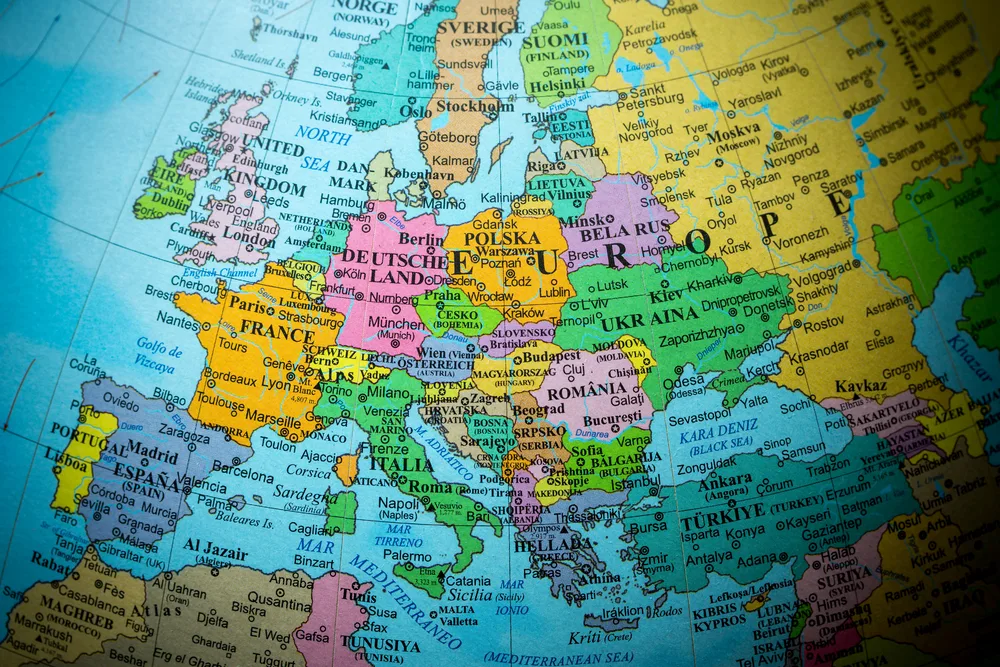
Victor Maschek/Shutterstock
When looking at a map, you can break Europe into four basic zones, or “quadrants.” Fair warning: it is just as hard to break these down as it is to decide on a number of countries, and some nations do not adhere to any of these areas.
Western Europe
Generally, Western Europe is considered to include the UK, Luxembourg, Ireland, the Netherlands, Monaco, Belgium, and France.
Eastern Europe
Most agree that Eastern Europe includes Belarus, Bulgaria, the Czech Republic, Hungary, Moldova, Poland, Romania, Slovakia, the Ukraine, and Western Russia.
Northern Europe
Northern Europe is considered to include Norway, Sweden, Denmark, Finland, Iceland, the UK, Ireland, Lithuania, Latvia, and Estonia.
Southern Europe
In Southern Europe, we have Albania, Andorra, Bosnia and Herzegovina, Bulgaria, Croatia, Greece, Italy, Malta, Portugal, Romania, San Marino, Slovenia, Spain, Macedonia, and Yugoslavia.
Other European Regions
The other regions of Europe, aside from the quadrants, include Scandinavia, the Iberian Peninsula, Central Europe, the Balkans, and the British Isles. If a country does not fall in one of the quadrants, it may be found in one of these.
Note, however, that some countries fall into more than one category – e.g. the United Kingdom, which is considered both Western Europe and Northern Europe, as well as the British Isles.
Other sources break down the quadrants into these regions – e.g. Northern Europe includes Scandinavia, the British Isles, and the Baltics.
Again, there’s no real “right” answer. Confused yet? Let’s take a look at some of the other ways in which Europe has organized itself.
What Is the European Union?
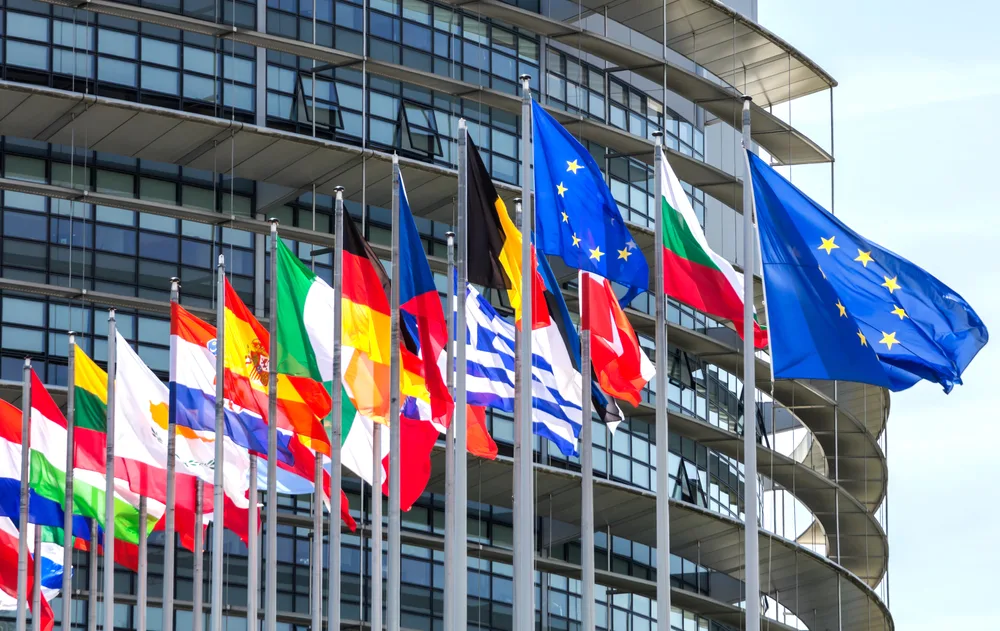
Strasbourg, France, July 3, 2019: European Parliament in Strasbourg, France/MDart10/Shutterstock
The European Union is a political body that contains some, but not all, of the countries of Europe. According to a government website, “The European Union is a unique partnership between 27 European countries, known as Member States, or EU countries.
Together they cover much of the European continent. The EU is home to around 447 million people, which is around 6% of the world’s population.”
Importantly, the European Union is not a country in its own right, even though it shares a trade policy, agricultural legislation, a market, and currency. Rather, says the site, “Citizens of the EU countries are also EU citizens.”
What Is the Schengen Area?
The Schengen Area is another matter that creates some confusion about which countries are actually in Europe. However, it is a separate polity. Its main goal is to reduce roadblocks (pun intended) when crossing borders between member nations.
“By signing the Schengen Agreement on 14 June 1985, Belgium, Germany, France, Luxembourg and the Netherlands agreed to gradually remove controls at their internal borders and to introduce freedom of movement for all nationals of the signatory countries, other EU Member States and some non-EU countries,” explains EUR-Lex, an official EU site.
The site adds that “The Schengen Convention supplements the agreement and lays down the arrangements and safeguards for establishing an area without internal border controls.”
And remember when we discussed above that the EU and Schengen have overlap, but aren’t the same?
EUR-Lex clarifies this: “Today 27 European countries, including 23 of the 27 EU Member States and the four European Free Trade Association (EFTA) countries – Iceland, Liechtenstein, Norway and Switzerland – are part of the Schengen area.”
If this goes to show anything, it is that even a continent as united as Europe seems to be from the outside is made up of a wealth of different people, cultures, beliefs, and motives.
Which Are the Largest European Countries by Population?
By population, the largest European countries are, in descending order:
- Russia
- Germany
- France
- The United Kingdom
- Italy
- Spain
- Ukraine
- Poland
- Romania
- The Netherlands
If you include Turkey and Kazakhstan, they are included in the top 12, with Turkey at No. 2 and Kazakhstan at No. 11.
Which Are the Largest Countries by Area?
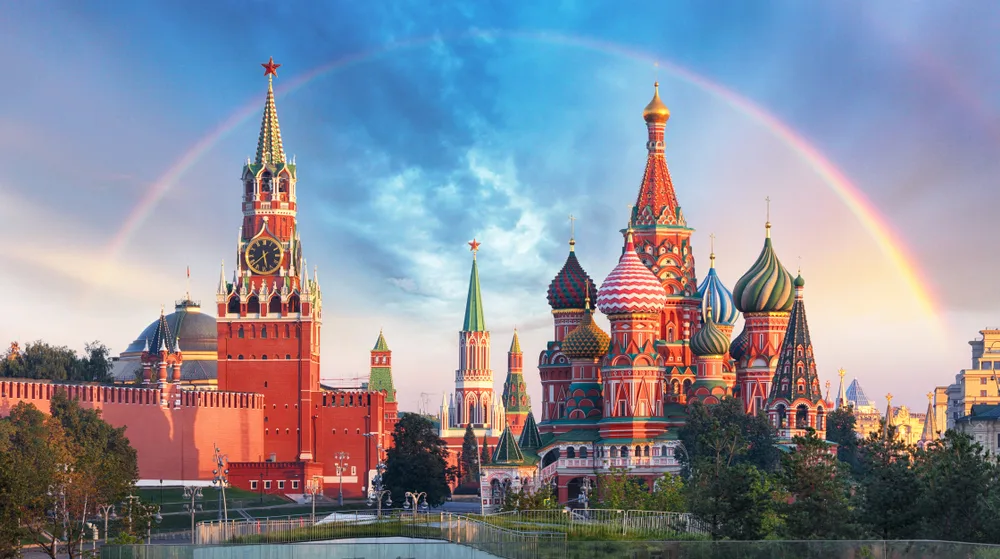
TTstudio/Shutterstock
By area, the largest European countries are, in descending order:
- Russia
- Ukraine
- France
- Spain
- Sweden
- Germany
- Finland
- Norway
- Poland
- Italy
There are some discrepancies online about where Norway falls in the list, but it is always in the top ten.
Fun Facts About European Countries
Want a quick Who’s Who of Europe? Here are some fun facts to break out at your next cocktail party (or on your next international train ride):
- Highest point in Europe: Mount Elbrus in the Caucasus Mountains
- Lowest point in Europe: Caspian Sea shore in Russia
- Highest point to which you can travel: Klein Matterhorn in Switzerland
- Lowest point to which you can travel: Ryfast Tunnel in Norway
- Westernmost point: Monchique Islet in the Azores Islands, considered part of Portugal (if you are not including Greenland)
- Easternmost point: Cape Flissingsky on Severny Island, in Novaya Zemlya, Russia
- Northernmost point: Cape Fligely on Rudolf Island, in Franz Josef Land, Russia
- Southernmost point: Cape Trypiti on Gavdos Island, part of Greece
- Smallest country in Europe: Vatican City is the smallest country in Europe. It is independently governed and considered a “sovereign city-state.”
- Smallest independent island in Europe: Malta
- Largest island in Europe: Great Britain
- Longest train in Europe: Trans-Siberian Express from Moscow to Vladivostok
- Longest river in Europe: Volga River in Russia at 3,531 kilometers long
- Longest mountain range in Europe: Scandinavian Mountains or “Scandes,” stretching 1,762 kilometers across Norway, Sweden, and Finland
Frequently Asked Questions
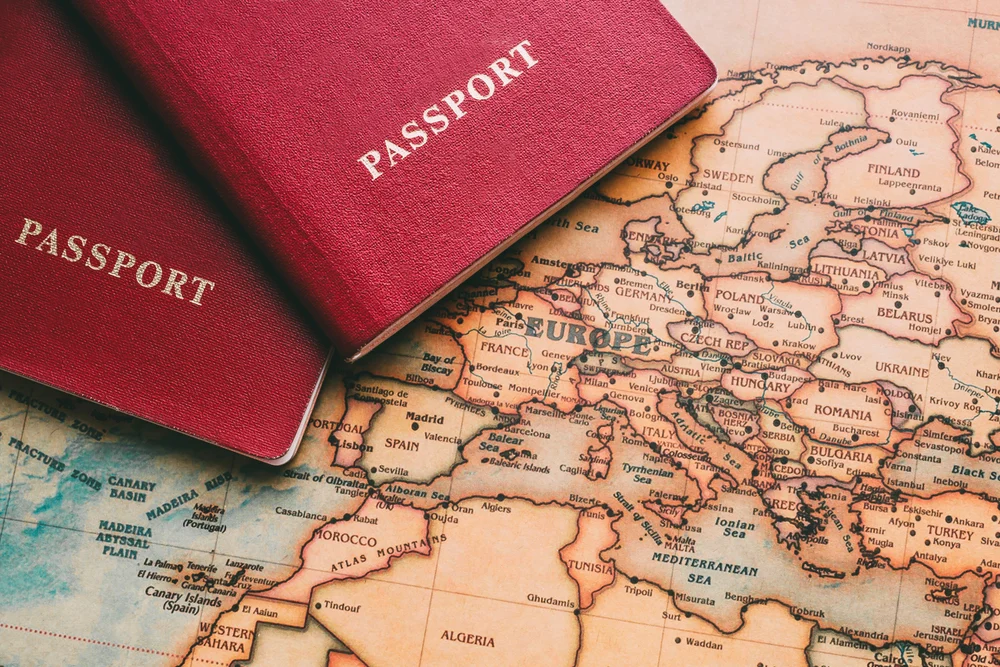
Alex Erofeenkov/Shutterstock
Here are some common FAQs about countries in Europe:
What are the requirements for traveling in Europe?
The requirements for European travel vary by country, by whether the nation to which you want to travel is part of the Schengen Agreement, and by how long you want to stay. Once you pick your destination(s) and length of stay, Google “passport requirements + country” and you’ll find what you need to know.
Are Europe and the EU the same thing?
No, Europe is not the same as the European Union. The EU is a political entity that includes many countries in Europe, but not all of them.
What does the EU mean for me?
The EU doesn’t have much bearing on travel for foreigners. It is mostly concerned with internal affairs of its member nations, such as legislation, markets, and reciprocity.
What does the Schengen Area mean for me?
The Schengen Area does have bearing for travelers to Europe. According to the official website, “A Schengen visa is a short-stay visa that allows a person to travel to any member of the Schengen Area, per stay up to 90 days for tourism or business purposes.”
Note that “if you are planning to study, work, or live in one of the Schengen countries for more than 90 days, then you must apply for a national visa of that European country and not a Schengen Visa.”
If you’re traveling to more than one country in the Schengen Area, you will be able to cross borders without having your passport checked. This also means you will not have your passport stamped, though. If you care about that, you’ll need to leave and reenter the country.
How many countries are there actually in Europe?
We can’t really answer the question of how many countries there are in Europe, because it depends on your definition of “country.” According to many sources, there are 50. According to others, there are 44 true countries and six sovereign stages. Other sources quote other figures. See “Countries in Europe: The Total” for more information.
Is Europe an expensive place to travel?
Europe is a somewhat expensive place to travel across the board. However, you’ll find countries in Eastern Europe generally less expensive than in the other quadrants.
How can I save money traveling in Europe?
The best ways to save money traveling in Europe include using miles for your airline tickets, booking your hotels well ahead of time, staying in hostels if you’re able, shopping at grocery stores rather than eating out all the time, and avoiding expensive tour groups and packages.
Get Your Adventure on in Europe Today!
With so many countries to choose from, this is the perfect place to plan a trip if you’re looking to travel soon. So what are you waiting for — book your trip today!



